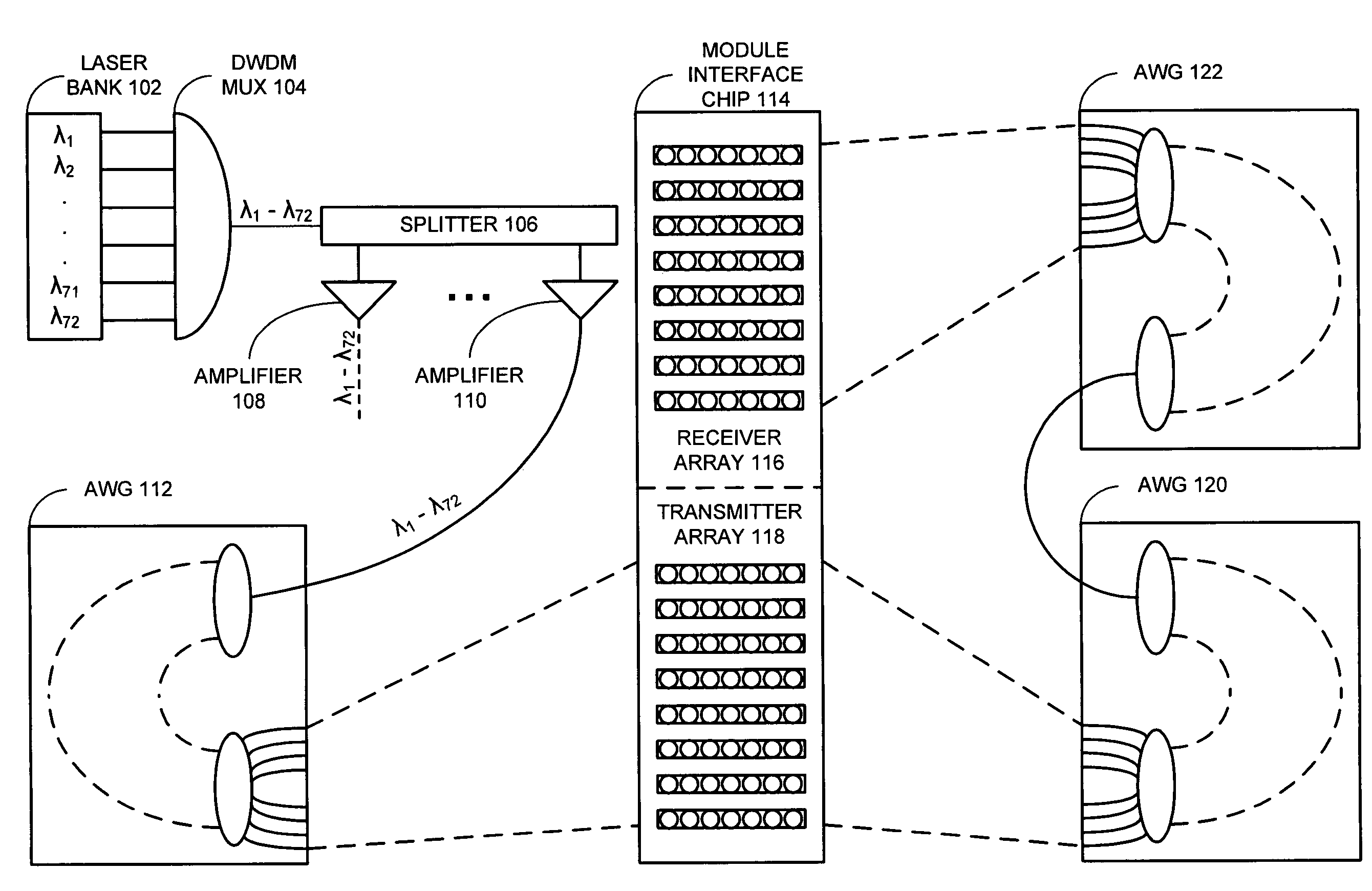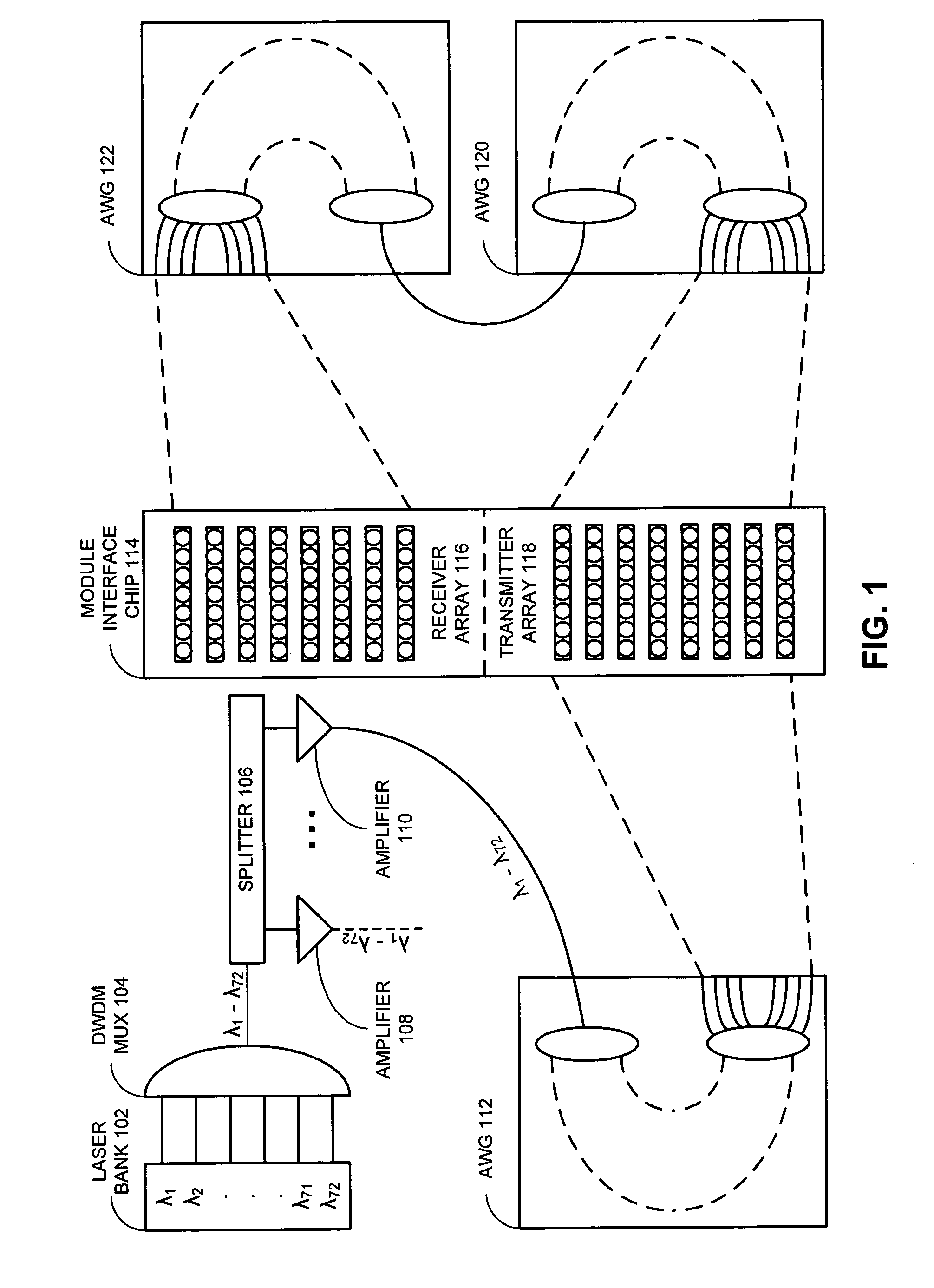Integrated ring modulator array WDM transceiver
a ring modulator array and transceiver technology, applied in the field of optical transceivers, can solve the problems of large gap between the i/o bandwidth density required on the electronic chip versus, limit the capacity of optical transceivers, and electrical i/o on the off-chip side, etc., to achieve the effect of facilitating optical multiplexing and demultiplexing
- Summary
- Abstract
- Description
- Claims
- Application Information
AI Technical Summary
Benefits of technology
Problems solved by technology
Method used
Image
Examples
Embodiment Construction
[0035]The following description is presented to enable any person skilled in the art to make and use the invention, and is provided in the context of a particular application and its requirements. Various modifications to the disclosed embodiments will be readily apparent to those skilled in the art, and the general principles defined herein may be applied to other embodiments and applications without departing from the spirit and scope of the present invention. Thus, the present invention is not limited to the embodiments shown, but is to be accorded the widest scope consistent with the principles and features disclosed herein.
Integrated WDM Transceiver
[0036]The present invention provides efficient structures and techniques for constructing dense, parallel optical transceivers with large aggregate bandwidths. These optical transceivers contain many parallel channels that can scale to an aggregate capacity of multiple terabits-per-second and beyond. In one embodiment of the present ...
PUM
 Login to View More
Login to View More Abstract
Description
Claims
Application Information
 Login to View More
Login to View More - R&D
- Intellectual Property
- Life Sciences
- Materials
- Tech Scout
- Unparalleled Data Quality
- Higher Quality Content
- 60% Fewer Hallucinations
Browse by: Latest US Patents, China's latest patents, Technical Efficacy Thesaurus, Application Domain, Technology Topic, Popular Technical Reports.
© 2025 PatSnap. All rights reserved.Legal|Privacy policy|Modern Slavery Act Transparency Statement|Sitemap|About US| Contact US: help@patsnap.com



